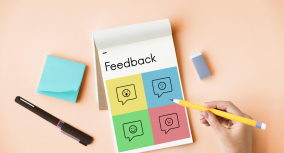If it’s your first time working with journalistic writing, using The New York Times article format as a blueprint is a great starting point. The newspaper is famous for being one of the finest in the world, and you can pick up useful news article writing techniques simply by reading a few of its columns.
Unlike essays and research papers that have a guaranteed invested audience (your teacher), articles have the additional task of capturing and holding the interest of your readers. But the truth is, anyone can write a good article by following a few simple rules of thumb. All you need to do is learn how to apply them effectively.
In this guide, the experts of our custom essays service will explain how to write an article like those for The New York Times. We’ll examine the characteristics of the writing style and typical article structure for news, feature, and profile stories. We will also provide tips for conducting interviews—the same principles are followed by NYT contributors. Finally, you will find a detailed breakdown of how to write a compelling piece from scratch.
❓ What Should You Write About?
Every article begins with an idea—that much is obvious.
Choosing a relevant subject and finding a unique angle for your article is practically half of your job as a writer.
So, how do you pick a topic?
“Let your subject find you” and “write what you know,” suggests The New York Times bestselling author Colson Whitehead in his Op-Ed for the Times called “How to Write.”
Keep up with developments and trends in the writing and journalism communities, and trust your own judgment as well. If you’re interested in reading about something, your potential audience will probably want to read about it, too.
To help you pin down a subject, first identify your audience.
Then, research your audience’s habits and interests to choose a specific angle that they will find interesting.
🔎 Research Your Audience
If you’re not sure where to begin, start by scanning the sections of The New York Times because they specialize in the widest possible array of stories.What kind of article are you writing?
Remember that the standards for straightforward news coverage, analysis articles, and columns are different from those of editorial and Op-Ed journalism.
The NYT news and editorial departments, for example, never coordinate their coverage, and they have a completely separate staff and management.
🚀 New York Times Article Format: Top 3 Types
When it comes to the format of your article, there are really only three ways you can go:
- Classic news article
- Feature
- Profile
The format of your article will dictate the way you approach your topic.
Classic News Stories
These articles provide the latest information and a breakdown of current events for readers.
They are the only type of articles that do not require advance planning, and they are written in a very specific format called the “inverted pyramid,” which structures information from most to least important.
Begin writing a news story by answering as many of the following questions as possible: Who? What? Where? When? Why? How?
These questions are generally referred to as the “five w’s and one h,” and any lead containing them is called a direct lead.
Often, some of the most important information is even put in the headline itself. For example, the front-page story “Salah Abdeslam, Suspect in Paris Attacks, Is Captured in Brussels” reveals the “Who?” “What?” and “Where?” before you even read the article.
If you’re writing a classic news article, your main objective is to be timely in order to stay relevant—news travels fast!
Feature Stories
They begin with a “hook,” a compelling introduction that will entice the reader into the story.
In many ways, feature articles are just like the essays you had to write in high school and college. Compare and contrast, cause and effect, problem and solution—these are all very common types of feature articles.
To write a good feature story, follow the same guidelines for writing a persuasive essay:
- Identify your audience.
- Pick your angle, and decide how you want your audience to feel about your subject.
- Put your subject in context, and make the story relevant to your audience. Tell your readers why they should care.
- Anticipate questions and criticism.
Profile Stories
Personality profiles are a sub-category of the feature genre that explore the background and character of a particular person or a group.
We talk about them separately because they rely so heavily on the interviews that the reporter conducts with his or her subject(s).
It’s important to know that although profiles rely on some biographical material, they are not biographies.
The focus of a profile must be on a news angle or one single aspect of the subject’s personal life or career.
🏆 Top Eight New York Times Tips for Conducting Good Interviews
- Know the rules of attribution.
Identify yourself as a reporter to your sources before you start a conversation. Otherwise, their comments won’t be considered “on the record,” and you will not have permission to use them in your article.If a source tells you something “off the record,” you may not quote them. However, you can try to find another source who will go on the record if it’s something you really want to publish.Remember:Your source cannot take something they’ve already said “off the record.” - Avoid “Yes” or “No” questions, listen carefully, and ask follow-up questions.
Questions beginning with “how” or “why” are more likely to get your source talking.Go into an interview with a list of questions you’d like to ask, but don’t be too attached to them.Prod your source to keep talking about a specific topic by following up with questions like, “What do you mean by that?” and “Could you tell me more?”

- Do your homework.
Research your sources before you sit down with them for an interview. This way you don’t waste time on trivial questions, and you’ll be prepared to put their comments into context so you can ask more thorough and important questions.When interviewing experts and leaders in various fields, make sure you familiarize yourself with their work so you can ask intelligent questions and judge the quality of their comments. - Take notes.
Write down notes about the most interesting or important parts of the interview, even if you’re recording the entire thing on audio or video (for which you have to get your source’s permission).Depending on the length of your interview, transcribing recordings can be a very time-consuming task. To make things easier for yourself, make a note of the minute and second displayed on your recording device whenever your source says something you might want to quote later.

- Observe your surroundings.
Pay attention to your source’s personal style and non-verbal communication.Take notes about any habits and mannerisms you notice. Their posture, the tone of their voice, their pattern of speech—all of these elements will help you paint a more complete and vivid picture of your subject when you get to writing. - Interview as wide a range of sources as you can.
Meeting with many sources will help expand your understanding of your subject, which may in turn lead you to discover some significant connections or discrepancies.It will also provide you with a more diverse range of quotes to use in your article.When writing a profile feature, NYT recommends interviewing at least five people besides your subject to get a more complete picture of your subject as a person.
- Know that your understanding of your subject will evolve as you gather evidence.
It’s important that you keep an open mind and not presume to know everything there is to your topic. - Schedule interviews as far in advance as you can, and be persistent.
Approach your sources early so you have time to schedule follow-up interviews, if necessary.If they refuse to talk to you, be respectively persistent.Every time you speak to a potential source, introduce yourself, explain the topic of your article, and state why you believe their input will be valuable.If all else fails, ask if they could recommend someone else who might be willing to go on the record.
🤔 How Do You Write It?

Begin writing all of your articles by making an outline of your story.
When you should start the outlining process depends on how ambitious your project is.
If it’s a story of several thousand words that includes extensive investigation, fact checking, and interviewing, it’s best to make a habit of debriefing every day you work on it.
Write up short profiles of all of your sources shortly after conducting the interviews, while details are still fresh in your memory. If you can, transcribe your recordings as well.
Identify the most compelling bits of information you’ve gathered.
Start building your story around this information.
Set the “inverted pyramid” structure aside, and aim to present your information thematically, instead of chronologically or in the order of most to least important.

Pay particular attention to the beginning of your article.
You want your lead to grab your reader’s attention and make them want to read the whole article.
Unlike traditional news leads, feature leads offer a lot of creative freedom because they don’t require you to include the “five w’s and one h.”
Instead, in feature articles, these questions are usually summed up in a single paragraph—the “nut graf”—which clearly states the subject of the profile and explains why they’re interesting. You can go as far as practice with an article summarizer—insert your text, see what comes out and adjust it to meet your requirements.
Feature leads can be written in a huge variety of ways. The New York Times Learning Network lists the following delayed leads as the most common.
- Narrative – Using an anecdote or a story to illustrate the topic, like the lead of “A Black Police Officer’s Fight Against the N.Y.P.D.”
- Descriptive – Describing an object, person, or setting that is a key element of the article, like the lead of the article “$20,000 Cup of Coffee” that paints a picture of a luxury coffee maker
- Question or Quote – Opening with a rhetorical question (be sure to avoid clichés!) or a particularly telling quote from one of the key characters of the story, like the lead of “How Broadway Actors Stay Healthy”

- Show, don’t tell.
This is the golden rule of any kind of writing, and journalism is no exception. Use facts and quotes to support your arguments and statements when appropriate. Be sure to include details whenever you’re writing descriptions to make your writing more evocative. - Be concise.
“Never use three words when one will do,” writes Colson Whitehead in “How to Write.” A guiding principle of writers everywhere, this is an absolute rule of thumb for reporters.When writing an article for a general audience, always follow the K.I.S.S. rule: Keep It Simple and Stupid.

- Don’t use too many direct quotes.
“Think of direct quotes as the icing on a cake—they enhance, but they shouldn’t form the substance of your story,” says The New York Times. Direct quotes make excellent transitions, but be sure attribute them every single time. Don’t make your readers guess who’s talking.When you’re quoting several sources simultaneously, use last names for attribution rather than pronouns to avoid confusion. - Don’t finish your articles with a conclusion.
Picking a particularly poignant or evocative quote to end your article will reaffirm your subject’s voice for your reader one last time.

- Edit. Fact Check. Proofread.
- Check your work for grammar, spelling, and stylistic errors. The Associated Press Style is the general standard for all journalistic writing. When in doubt, check the Purdue Online Writing Lab regarding the use of acronyms, numbers, and capitalization.
- Read your article out loud to identify run-on sentences and sentence fragments and to make sure your writing has a smooth, organic flow.
- Triple check your facts. If you’re not absolutely sure about something, leave it out. You should be able to defend every single fact and assertion you make in your article.
- And lastly, if you don’t have an editor, ask a friend, teacher, or colleague to read your article and give you feedback about whether the flow of information is easy to follow and whether you’ve answered any and all questions raised by your story.
Learn more on this topic:












Thank you for such valuable tips. I aim to be a successful article writer and I feel these tips will help me.
Very good, thanks.
Aw, this has been a very good post. In notion, I would like to invest writing like this additionally – taking time and actual effort to generate an excellent article, but so what can I say. I procrastinate a lot, and no indicates to get something carried out.
Thanks for the feedback! Good luck on overcoming your procrastination 🙂
Hi Thomas,
We really don’t mind. Glad that you found it useful and decided to share it with others. Hope you visit our blog again!
Hey, that’s great! So with all this brain power AWHFY?
Can somebody give me example sentences on how to add in a personal statement?
Hi Alexis,
Thank you very much for stopping by. You’ve come to the right place – we have many useful materials on writing personal statements in our earlier posts: How to Write a 250 Words College Personal Statement.
We hope it helps.
Have a nice day!
I’m so glad to find this helpful page! This is what I need to write my article as a writing guru! THX!
This is a very useful website. I had to write an article for a magazine and here I’ve found a wonderful post on writing magazine articles. Thanks!